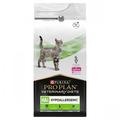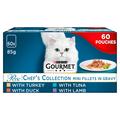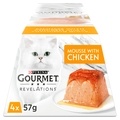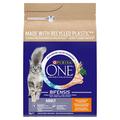Cats are sensitive to the heat and often struggle to keep cool as temperatures rise. Although cats will often seek out shade themselves, there are some simple things you can do to help them including offering fresh water regularly, creating cool spots for them to relax, and even applying pet-friendly suncream to their ears and noses.
Below are 10 tips to help you help keep your cat hydrated and comfortable throughout summer:
1. Keep Your Cats Water Bowl Topped Up
Your cat needs access to fresh, cool water at all times. On hot days, change the water multiple times throughout the day. You can also put a couple of ice cubes into your cat’s water bowl to help keep it cool for longer.
Many cats prefer to drink running water so cat fountains are a good idea. If you don’t have a cat fountain, you could turn the tap on for them every now and then.
Place a few water bowls around the house so your cat always has easy access to drinking water. Try not to use plastic bowls as these can impact the taste of the water.
If you are concerned your cat is not drinking enough you could try mixing water with their food to increase their fluid intake. You may find your cat is not eating much during hot weather, this is normal as long as they aren’t showing any other signs of sickness or discomfort.
2. Provide Shade
Ensure your cat has access to shady spots both inside and outside. Shade is essential to escape the blazing sun, trees and bushes are ideal as they will naturally create shade while also allowing good airflow.
If you don’t have plants in the garden you can create a make-shift shaded area in the garden using garden furniture or cardboard and a large lightweight sheet. Don’t use thick blankets as these will trap the heat and reduce airflow.
3. Switch Their Bed To A summer Bed
Most cat beds are warm and cosy, which is great for most of the year, but in Summer they can be a bit too warm. To help your cat stay cool in summer, put a lightweight bed down.
Summer beds are made to keep cool so your cat can relax and snooze without getting too hot. If you position the bed slightly off the floor this will help to promote airflow.
4. Keep The House Cool With AC Or By Keeping The Curtains Closed
Set up fans or turn on the AC in the rooms your cat spends the most time. Prevent overheating by keeping the curtains closed.
Be mindful of direct sunlight: Tiles that provide a cool spot in the shade become very hot when exposed to direct sunlight so blocking the windows is a good idea.
On hot days, consider giving your cat access to the cooler areas of the house such as the bathroom. This helps give them places to retreat to if they become too warm in other parts of the house.
5. Create A Cold Pad
Cold, damp towels or an ice pack wrapped in a towel are great options to provide your cat some relief from the heat. Put the towel down in a place your cat likes to relax or place the ice pack into their bed. Your cat will be able to lay on or near the cold pad and this will keep their temperature down.
6. Keep Cats Inside During The Hottest Part Of The Day
It’s worth keeping your cat inside when temperatures are really high. Even if your cat usually goes outside and seems disappointed that they can’t go out, it is for the best and they will be able to go out again when it is safe.
Keeping your cat inside is the best way to make sure they are calm, cool, and safe during high temperatures. Pavements and artificial grass can become scalding hot in the sun and this can cause burns or sores to cat’s paws.
7. Apply Pet-Friendly Suncream
Cats with thin/ no fur and white cats are more vulnerable to sun damage so suncream is particularly important for them. Apply a pet-friendly suncream to their nose, ears, groin, and belly area, as well as other areas that are not well protected by fur.
On hot, sunny days it’s best to keep your cat out of the sun altogether.
8. Brush Your Cat
If your cat has matted fur they will struggle to control their body temperature so help them keep cool by brushing them and ensuring any knots are removed.
Regular grooming will also help remove excess hair meaning your cat’s coat will be less dense and they will find it easier to stay cool.
Grooming is important but you should never shave your cat. Shaving your cat’s fur will make it much harder for them to keep cool and will increase their risk of sunburn and heatstroke.
9. Close Sheds and Greenhouses
Some buildings such as greenhouses get extremely hot during the day so keep these closed to prevent your cat from going inside in search of shade.
It’s not uncommon for cats to get trapped in greenhouses or sheds so double-check before closing up to ensure no cats are inside.
10. Never Leave Your Cat In The Car Or Conservatory
If you do need to take your cat in the car, never leave them alone in a parked car. Cars can get dangerously hot in a very short amount of time, even if the windows are slightly open. Your cat will be at serious risk of overheating in just a couple of minutes.
Don’t leave your cat in the conservatory either as, like a car, the conservatory will become extremely hot and your cat will have no way to escape from the heat.
Signs Of Overheating:
Cats do not tolerate heat well, they can only cool down through panting, sweating through their paws, and grooming themselves. This means overheating and heat stroke is a risk.
Some cats are more at risk of overheating than others. Short-nosed breeds cannot pant as effectively which means they may struggle to cool down. Other breeds such as Himalayans and Persians can be especially sensitive to heat and may be predisposed to heatstroke.
Early signs of overheating may include:
-
Restlessness
-
Panting
-
Sweaty paws
-
Excessive grooming
-
Drooling
-
Slightly elevated temperature (39-39.5 degrees C)
This can then develop into heat exhaustion which includes:
-
Rapid breathing
-
Rapid pulse
-
Lethargy
-
Vomiting
-
Redness of mouth and tongue
-
Stumbling
-
Elevated temperature of 39.5 degrees C or higher
If your cat is showing signs of overheating or heat exhaustion, immediately move them to a cool place and rub them with a cool, damp towel or soak them with cool water (if this does not stress them out). Encourage them to drink and contact your vet.
Written by: Tuxedo-Cat (Guest Author)








